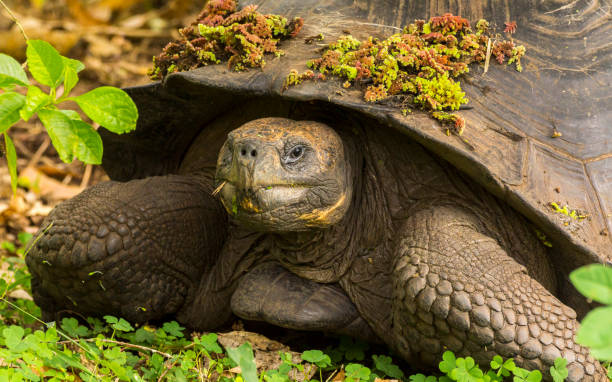In the age-old story of evolution, reptiles wear their history on their skin. From the sleek scales of snakes to the iridescent feathers of birds, these appendages hold clues to their ancient past. Now, a new study has uncovered a surprising twist in one of the oldest reptilian lineages: turtles, it turns out, carry two evolutionary blueprints for forming the intricate patterns of scales on their heads.
Published in iScience, the groundbreaking research from the University of Geneva (UNIGE) reveals that turtles develop their head scales using two fundamentally different mechanisms—one governed by genetic instructions, the other shaped by raw physical forces. It’s a biological first that deepens our understanding of reptilian evolution and hints at secrets long buried in the skin of dinosaurs.
A Tale of Two Scale Patterns
From a distance, a turtle’s head may look like a mosaic of rigid plates—symmetrical, protective, and ancient. But look closer, and the story grows more complex. At the edges of the head, just above the eyes and around the jaw, the skin patterns follow a familiar path seen in many vertebrates: they arise from placodes, small, gene-activated patches of skin that form the basis for hair, feathers, and scales. These placodes are precise, chemical blueprints governed by genetic signals that have remained largely unchanged across evolutionary time.
But on the top of the head, the scales tell a different story—one that has no genetic script.
Using advanced 3D light-sheet microscopy and computer simulations, scientists in the lab of Professor Michel Milinkovitch at UNIGE discovered that the polygonal scales covering the crown of the turtle’s head form without any sign of placode activity. Instead, they emerge through a mechanical process—when growing skin is forced to fold over a slower-growing layer of bone underneath.
“Think of a carpet bunching up over uneven floorboards,” explains Rory Cooper, postdoctoral researcher and co-author of the study. “That folding, under physical stress, is enough to generate the complex, asymmetric shapes we see in turtle head scales.”
The Mechanical Legacy of Dinosaurs?
This mechanical model isn’t entirely new. The same Geneva lab previously uncovered it in crocodiles—reptiles that, intriguingly, also lack placodes in their head scales. But turtles are different. They use both mechanisms on a single canvas: chemical signals in one zone, physical forces in another.
“This is the first known case in a vertebrate where two distinct developmental processes are used side-by-side on the same organ—the head,” says Ebrahim Jahanbakhsh, a computer scientist and co-author of the study. “And remarkably, it explains why no two turtles look exactly the same.”
Indeed, the top scales differ wildly from one individual to another—even between the left and right sides of the same turtle. Unlike the predictable symmetry of genetically-driven patterns, mechanical folding is chaotic, sensitive to minute variations in tissue growth.
From an evolutionary standpoint, the implications are profound. Turtles, crocodiles, and birds all descend from a common reptilian ancestor. Birds, with their feather-producing placodes, seem to have lost this ancient mechanical trick along the way. But turtles and crocodiles retained it.
“This tells us that mechanical skin folding is not a bizarre quirk of crocodiles,” says Milinkovitch. “It is likely an ancestral trait, once present in the great reptiles of the Mesozoic era—including dinosaurs—and only later discarded by the avian lineage.”
Beyond the Shell: What This Means for Science
While the study is rooted in evolutionary biology, its ripples extend far beyond ancient reptiles.
In biomimetics—a field where engineers look to nature for inspiration—understanding how complex surface patterns can arise from simple mechanical laws could inspire new designs in architecture, material science, and robotics. Just as a turtle’s crown forms from physical stress, materials could be engineered to fold into functional, even artistic, shapes based on stress distribution alone.
In regenerative medicine, these principles might help scientists replicate complex skin structures, enabling new approaches to wound healing or artificial skin design. Rather than programming every detail genetically, future techniques could rely on guiding mechanical forces to do the shaping.
“This is a paradigm shift,” says Milinkovitch. “We’re learning that biological form doesn’t always require a molecular instruction manual. Sometimes, physics writes the blueprint.”
A Living Fossil With a Living Secret
Turtles are often called “living fossils,” their armored bodies unchanged for over 200 million years. But this new research shows that even their ancient skin harbors surprises. In the folds of their heads, we find echoes of evolution’s flexibility—how life, faced with the constraints of form and function, finds more than one way to sculpt itself.
In an age of genome sequencing and genetic engineering, it’s easy to forget that biology is not just about DNA. It’s also about the physical forces that pull, stretch, and bend living tissue into patterns as old as life itself.
So the next time you see a turtle sunning on a log, remember this: its head is a relic of ancient experiments in evolution. A place where genes and geometry meet. A reminder that nature’s creativity lies not only in the code, but in the chaos.
Reference: Rory L. Cooper et al, Chemical and mechanical patterning of tortoise skin scales occur in different regions of the head, iScience (2025). DOI: 10.1016/j.isci.2025.112684
Inspired? Don’t keep it to yourself—share this and spark another mind.
